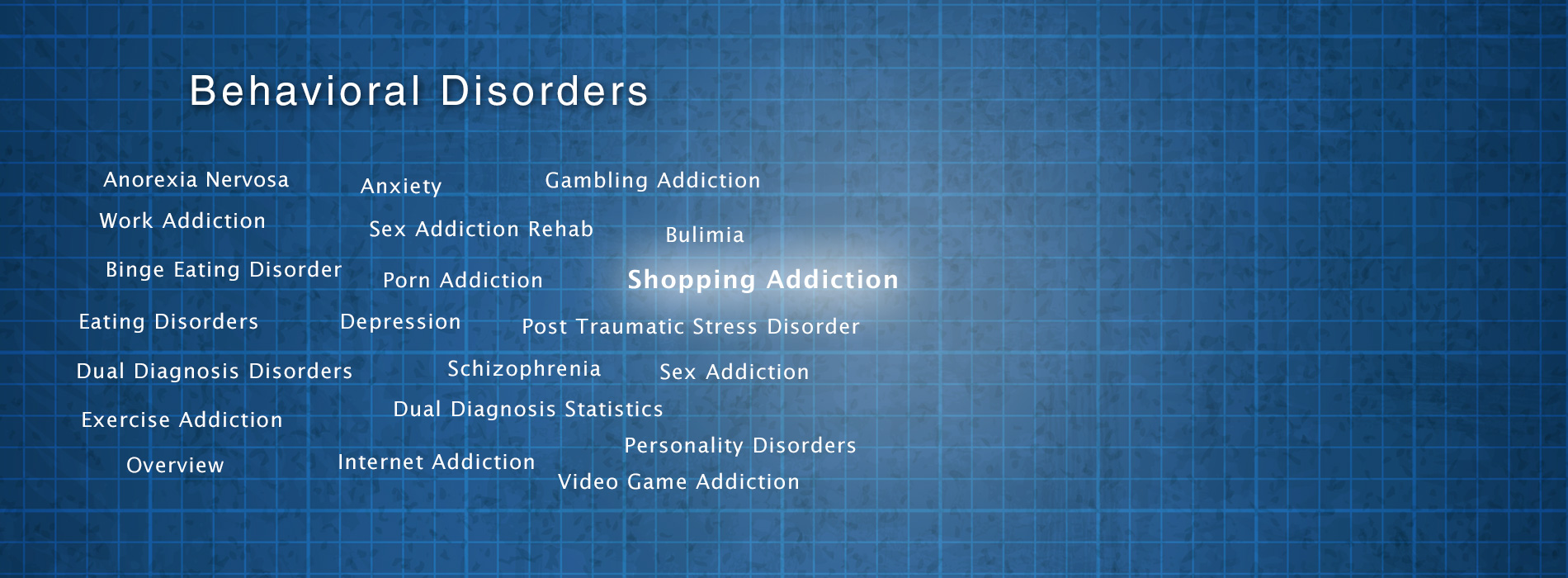![]()
Shopping Addiction
Shopping is an essential part of our lives, from grocery shopping to clothes shopping and beyond. It can be fun to shop, and sometimes shopping can be a fun stress reliever or bonding experience with friends. However, shopping addiction, also called compulsive buying disorder, is a condition that occurs when shopping habits become a problem for daily function.Shopping is often jokingly called “retail therapy” and can give people a happy feeling or “buzz” that can create a positive feedback loop that encourages the person to repeat the behavior. People who use shopping as therapy are at an elevated risk of developing shopping addiction, as they use shopping as a coping mechanism for negative emotions. Shopping addiction can be related to OCD hoarding, impulse control disorders, or depression. Some people with shopping addiction often have low self-esteem and use shopping to establish their identity through clothing or possessions. Addicts often feel depressed or guilty after a spending spree, which feeds into a cycle of depression that leads to more tension and more spending. Once they purchase the items, they do not feel attached to them and may not even use them at all, and as a result some addicts return items due to this guilt, if possible.
Approximately one in twenty adults is affected by compulsive buying disorder, with more women affected than men. The increased availability of shopping due to credit cards and the internet have enabled casual spending beyond one’s means. Credit card debt can add up very easily for shopping addicts. This can cause strain with inter-personal relationships, particularly with spouses. The financial problems caused by shopping addiction include depression, stress, and physical health problems.
Treatment for shopping addiction includes therapy that aims to treat the underlying causes of the shopping addiction. Patients aim to develop coping mechanisms to deal with negative emotions without shopping. Cognitive behavioral therapy tries to identify thoughts and behaviors that lead to shopping binges and disrupt or avoid them.
Because one cannot fully avoid shopping in their lives, healthy shopping habits are also taught. Recovering addicts should ask themselves “Do I really need this or just want it?” when shopping. Canceling credit cards helps decrease easy access to shopping methods online and prevents individuals from overextending themselves financially. Recovering addicts can also set an amount of time to wait before purchasing an item. Waiting 48 hours before wanting something and buying it can allow the person to process if they really need it or not. They can also make a list and stick to it or bring a friend with them when shopping who can help them evaluate potential purchases. They are encouraged to not carry their wallet if they know they will be in a situation with the potential for excessive purchases, such as a fair or mall, or only carry cash.
If you suspect someone you know has a shopping addiction, meet with them in a private place to talk about it. Tell them that you are concerned about them and avoid blaming language. Remember that they have to seek help when they are ready. You cannot force them to get treatment.
Source: http://www.psychiatrictimes.com/articles/compulsive-buying-disorder-affects-1-20-adults-causes-marked-distress

